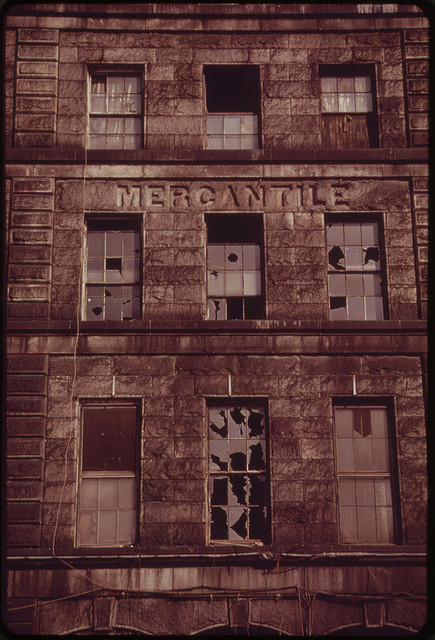
Mercantile Building, 1973, photo by Ernst Halberstadt via the US National Archives.
This is the second installment of a series of posts inspired by Boston photos from the EPA’s Documerica project. You can read the first installment on East Boston’s Neptune Road, here.
At the time the Mercantile Wharf Building was erected at Commercial Street and Atlantic Avenue, it was still on the waterfront. Hence the name.
The Mercantile Building was itself built on infill, then beside the water. In these years, much of the new growth on the waterfront was taking place on new land created between some of the old docks, now too small for the latest generation of ships.
It was one warehouse in a maze of support facilities for nearby Quincy Market. Gridley James Fox Bryant, son of the architect attributed with the design of the Bunker Hill monument, designed the building (Interestingly the Bunker Hill monument is attributed with creating a wider market for the granite that prominently features in the carvings and pillars Quincy Market). Bryant is deemed a member of the “Boston Granite School.” Construction concluded in 1857.
This photo was taken between a devastating 1970 fire which raged through the building, and its refurbishment in 1976 with shops below elegant apartments. Today, the building is considered to be an unusually intact remnant of the old harbor commercial architecture.
Along with Boston landmarks, Halberstadt, who, fascinatingly, had also been a WPA muralist captured images of daily life throughout the city in the early 70s. You can find his contributions to the Documerica Project here. The Smithsonian has a transcript online of an exhaustive oral history interview with Halberstadt, which begins with his arrival in Boston aboard a steamship at age one.
Pingback: The Blackstone Block « Looking Backward